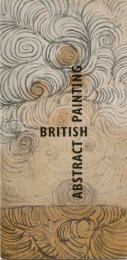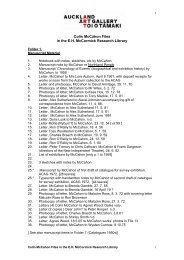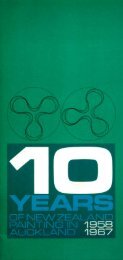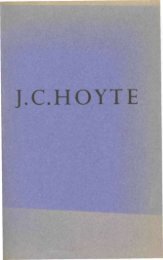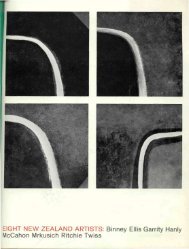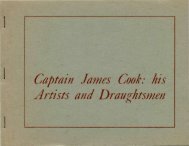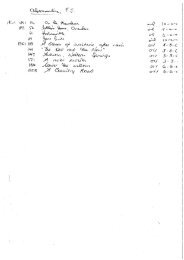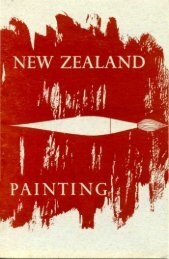Create successful ePaper yourself
Turn your PDF publications into a flip-book with our unique Google optimized e-Paper software.
The Museum EnvironmentSunlight (because of its intensity and infrared radiationas well as ultraviolet) should neither be allowed tofall directly on to works of art nor be reflected on tothem from a mirrored surface. White paint (titanium,zinc and lead) is a fairly good ultraviolet absorber and,in some cases, it may be possible to solve the ultravioletproblem by ensuring that all light entering a room isreflected at least once from a white wall.Light Measurement—meters are available for measuringvisible light and ultraviolet radiation. All museumsshould either possess or have ready access to thesemeters.Air PollutionDust is damaging to museum objects. It makes themunsightly, can cause permanent soiling, and containsmicroscopic particles of grit which cut and abrade materials.It attracts water, encouraging chemical action andmould growth. Dust also contains substances such assalt which promote chemical degradation of materials.Smoking and the general use of aerosols should notbe permitted in display or storage areas because tobaccosmoke and aerosol substances form deposits on the surfaceof objects which are difficult or impossible toremove.Atmospheric pollution is also harmful to museumartefacts. Large cities tend to have high levels of carbonmonoxide and sulphur dioxide. Thermal areas producelarge amounts of hydrogen sulphide. Associated with highrelative humidity, these gases become destructive acids.Atmospheric pollutants can also be produced insidethe museum by the emission of gases from certain constructionmaterials, textiles, adhesives and paint, and inspecial cases from the artefacts themselves. It is advisableto check with a conservator before choosing materialsfor display or storage. For example, new concretewalls produce alkaline aerosol particles which can discolourdyes and pigments and weaken silk.The urea-formaldehyde foam used as thermal insulationand the formaldehyde resins used in plywood,particle board and other building materials produceformaldehyde gases which cause embrittlement and corrosionin many artefacts and are toxic to humans.Certain woods give off acetic, formic and tannic acidswhich can cause considerable damage to lead objects.Adhesives such as PVA emulsions have similar effects.Sulphides are emitted from certain rubbers, paintsand finished textiles causing the tarnishing of silver andthe discolouration of photographs and pigments.Cellulose nitrate preparations were among the firstplastics invented. They include photographic films, imitationsilk, adhesives, and impregnated fabrics. Cellulosenitrate continuously emits acidic vapours as it ageswhich can cause the disintegration of neighbouringobjects.Insects and MouldThese cause a significant amount of damage to NewZealand collections of cultural artefacts every year. Themild, humid climate found in many buildings which lackair conditioning provides a perfect environment for theirpropagation. The damage caused ranges from minorlosses and staining to virtual destruction. Organic materialsare affected most. Some common insect pests are:Silverfish (Thysanura: Lepismatidae)—feed mainlyon starchy substances but will eat many other materialsincluding cellulose, provided there is some starch contentpresent, eg paper, cardboard, cotton and linen.Clothes Moths (Lepidoptera: Tineidae)—adultclothes moths do not feed and it is the larvae whichcause the damage. The larvae will feed on almost anythingcontaining proteinaceous material and may damagealmost any other adjacent substance to reach it.Proteinaceous materials include animal products such ashair, horn, bone, claws, fur, wool, silk and feathers andthe exoskeletons of insects.Cockroaches (Orthoptera: Blattellidae/Blattidae)—will feed on a variety of materials, including books,leather, sizing and glues. Mainly, though, they are ‘food’eaters and damage materials through soiling.5



